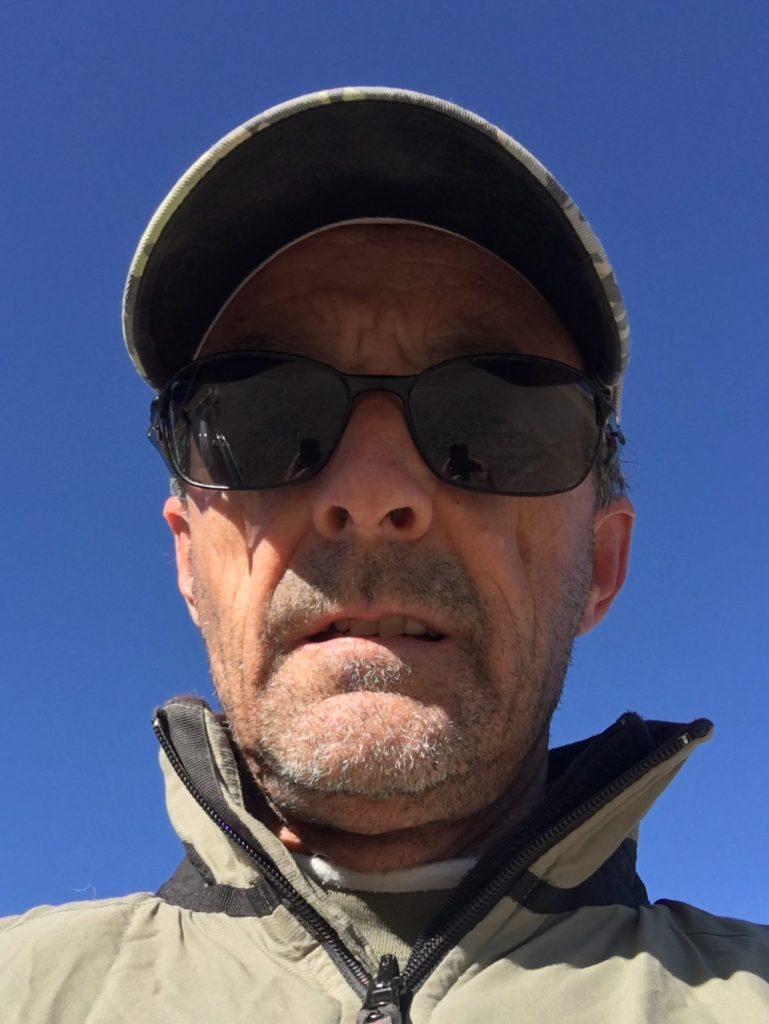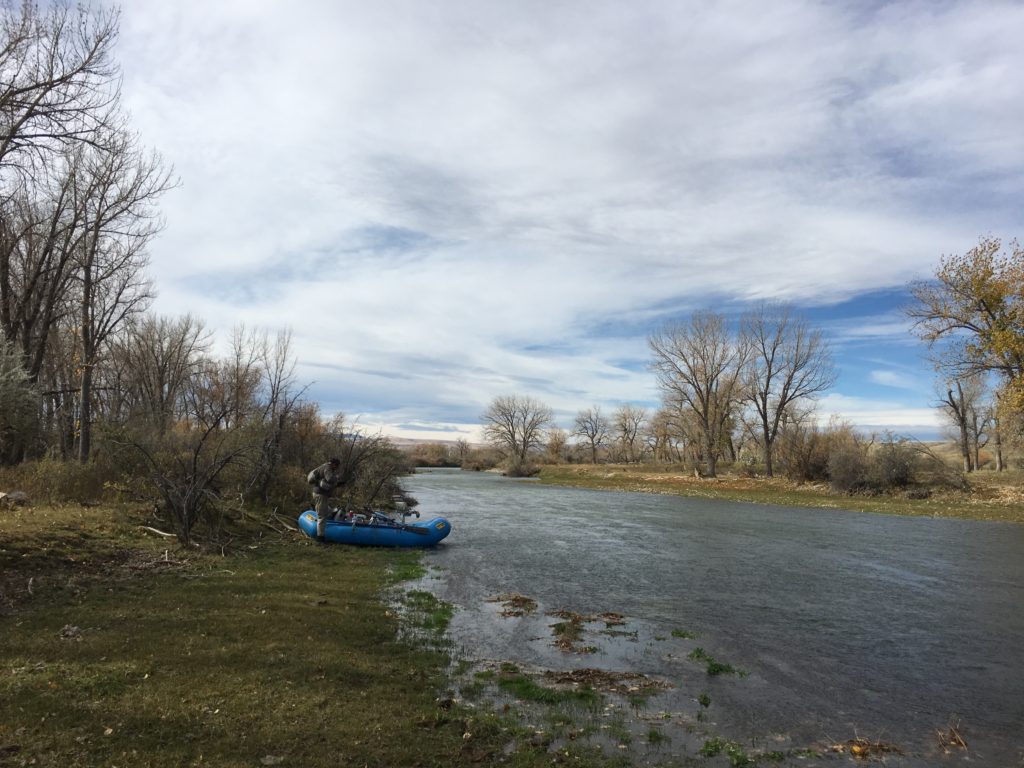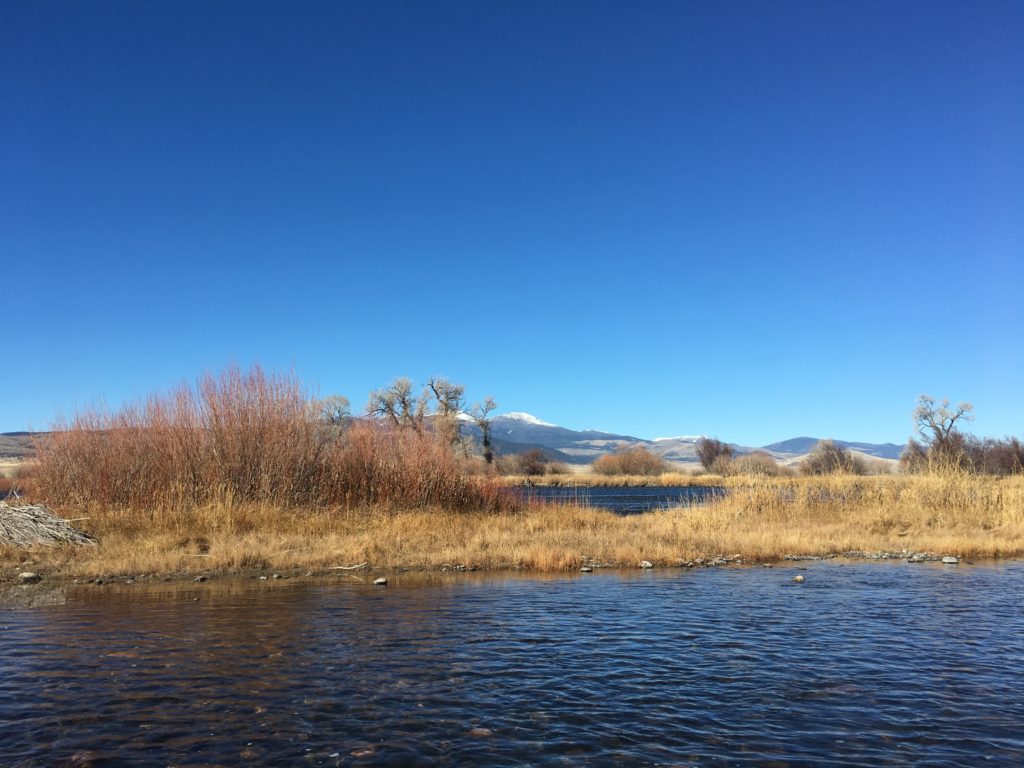I climbed the small knoll to get a better view of the land ahead. The meadow in front of me was a patchwork of yellow, rust and green. No longer than a mile, a quarter-mile wide, it appeared shaped like a teardrop. A thin line of willows zigzagged across it, growing where the stream flowed its course. Several small beaver ponds reflected the brooding grey of the sky overhead. Thunder rolled once more, this time closer still.

The storm that had been threatening on the far side of the Divide now spilled over into the valley. Low-slung clouds fingered down toward tree line, ghosting through the tops of the Engelmann. A single cloud detached from the mass and sagged ground-ward, shrouding the upper end of the meadow from view. The air temperature dropped noticeably. I turned to descend the knoll and seek out shelter when from the corner of my eye a blur of movement caught my attention.
A large coyote broke cover from the trees at the meadow’s edge and trotted leisurely across the grass with a distracted, sideways gait. I stood still, hoping my position downwind would keep me from being detected. Suddenly it stopped and turned in my general direction, nose high, sniffing the breeze, searching for the source of its discomfort. From a hundred yards, our eyes locked and we both stood motionless, eyeing each across the distance. After thirty seconds, the coyote turned and loped with urgency back to where it had first appeared, looking over its shoulder from time to time as it went before disappearing into the gloom of the spruce.
Fat raindrops were now spattering the hood of my jacket and thudding into the soft earth around me. A little way ahead a solitary spruce angled out over the stream. By the time I crawled under the umbrella-like shelter of its branches, the rain had turned to hail, pounding the surface of the stream a milky grey and accumulating in mushy clumps in the crevices and hollows of the meadow’s grasses. I unbuckled my pack and leaned back against the trunk while thunder rolled and my breath misted the cold fall air.
I broke a chunk of summer sausage, the same some cheese, and chewed in silence, feet dangling over the stream. On all sides of the meadow, the ground rose steeply like a giant amphitheater, the spruce its audience, packed close, silent and watchful. Standing atop the knoll before the hail came, I had been trying to imagine what it would have felt like to have been the first person to stand and take in that view, the little valley and its meadow so perfect and vulnerable, sheltered by the steepness and immensity of the mountains surrounding it.
What thoughts went through that person’s head, what motivation to be there in the first place? Somewhere to hide, to commune, a place to die, a place to make a stand or stake a claim? Did he or she marvel at its beauty, as I had, or was their intent more calculating — a place to unearth riches or harvest beaver or board feet of lumber? Or did they simply groan “Dammit, not more ****** mountains!”
And what of the first coyote? Had it known instinctively to turn and run, like its counterpart just had, sensing a shift in the balance of power, sensing that its world had irrevocably changed, that a new and dangerous serpent had entered the Garden? I wondered how many creatures in the past, two legs or four, had sheltered under this same spruce, how many other eyes had watched them, indeed were watching me, from the darkness of the surrounding forest.
After half an hour, the storm showed signs of lessening. The clouds still glowered over the mountain tops, rumbling their warning, but the hail had lightened to rain. I stuffed the remainder of my lunch in my pack. Deciding against continuing upstream, I crawled out from under the spruce and turned downstream away from the storm, leaving the coyote to its peace.





